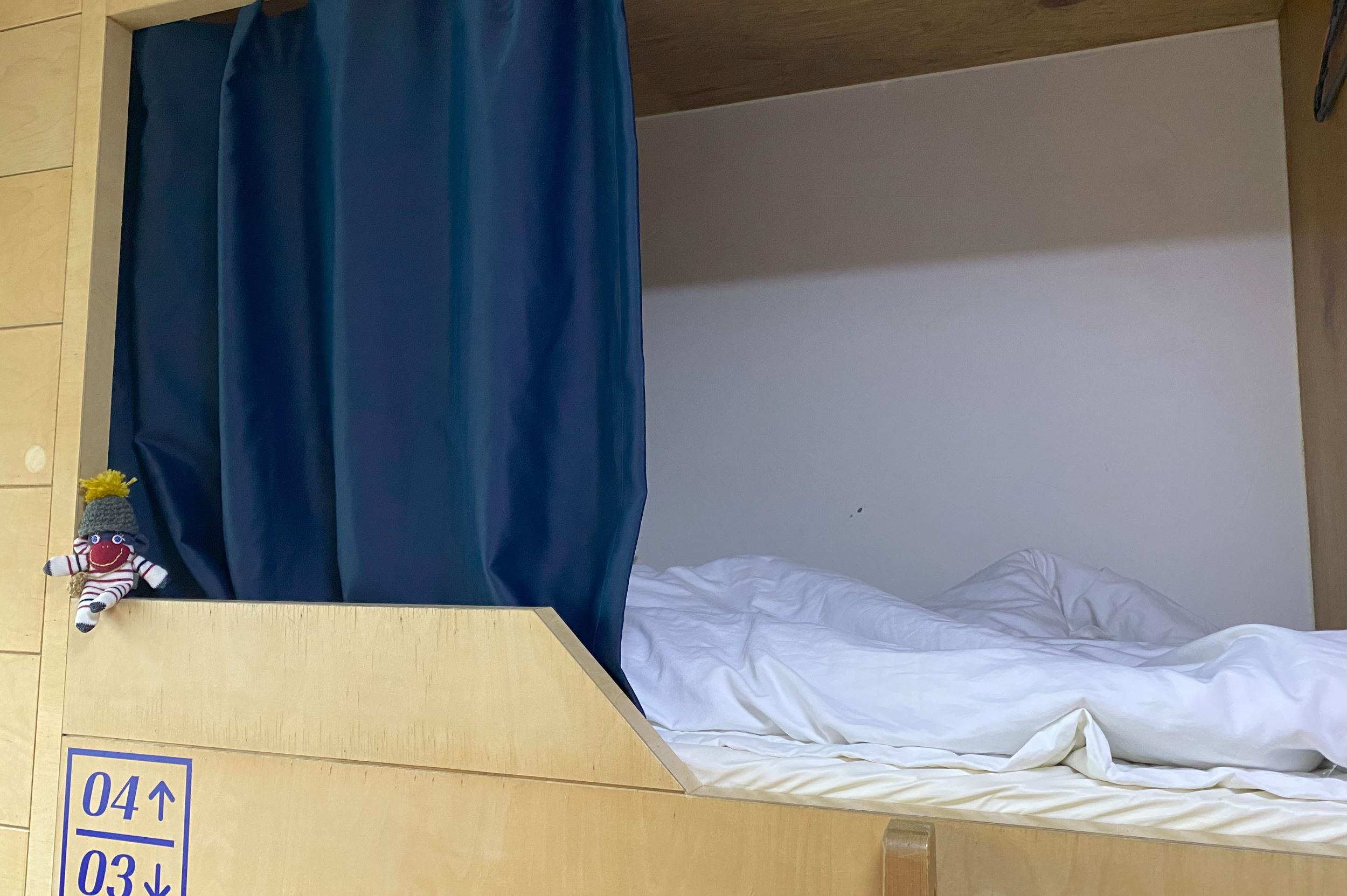
Jeju Island Travel Guide 2024
I visited Jeju in May 2023 and stayed for about a week. I really enjoyed my time on the island and highly recommend adding it to your travel plans.
Jeju is an island to the south of mainland South Korea, and it’s a popular destination for summer travels. International folks usually visit to climb the mountain and then dip, but there’s lots of fun to be had if you stay for a few days and explore.
Here’s my recommended activities and helpful info for a backpacker’s budget travel to Jeju Island!
This post contains affiliate links. If you click on a link and buy something, I get a small percentage at no extra cost to you. Your support helps keep this blog running— thank you! Read full disclosure here.



Resources
VisitJeju.net – Comprehensive website put together by the tourism board.
UNESCO World Heritage Centre‘s page for Jeju Island.
Jeju Olle Trail Guide – 27 routes covering 437km and the whole of the island.
Books
I couldn’t find any specific guidebooks for Jeju Island (weird!) but Lonely Planet has a good, updated guidebook for the whole of South Korea. Also, Lisa See recently wrote a fiction book about the women divers of Jeju Island called The Island of Sea Women.
Transportation
Quick Facts
- Cheap flights from the mainland
- Decent public transit, but slow
- Renting a car is popular, especially if you only have a few days
Flights from mainland Korea are cheap and quick, costing roughly $25USD from multiple major discount airlines and leaving multiple times a day from Seoul and Busan. I used Jeju Air and T’way and didn’t have any complaints beyond the usual ones of delays and baggage policies. Jeju Air allowed 10kg for carry on which was nice.
Transportation on the island depends on your budget and driving skills. If you only have a short amount of time and an international driver’s license, renting a car is the best way to see a bunch of the island in a day or two. I hate driving so I have no experience with this myself, but it’s a popular option for other tourists.
Kakao Taxi is available on Jeju, though it can be expensive if you’re a solo traveler. I only used it when I was traveling with friends from the hostel.
If you’re a budget traveler, there’s an extensive public bus system available on the island– though it can be slow, since there aren’t any highways and they have to drive around Hallesan on some routes. You can use your same transit card from the mainland to pay for bus fare on Jeju as well.
Be sure to download Naver or Kakao Maps to get accurate bus information, as Google Maps doesn’t really work in South Korea.
There’s also a hop on hop off tourist bus centered in Jeju City (and another in Seogwipo) which goes to tourist spots within an hour’s radius of the city. More info about that bus here.
Where to Stay (Accommodations)
There’s tons of hostels, hotels, airBNBs and guesthouses on Jeju, enough for any traveler of any budget.
My favorite was Yeha Guesthouse in Jeju City, which has free breakfast, cheap laundry, a big shared lounge space, and comfortable beds. It’s also fairly centrally located, right next to one of the major bus stations and not far from the airport.
I always check Hostelworld for cheap places to stay, wherever I go. Bonus: if you book through them you get access to a city chat, which is a great way to meet other travelers!

Stuff to Eat (Restaurants)

Be sure to try the local Hallabong tangerines, either by themselves or in a juice. Delicious! Other local dishes: heuk dwaeji (Jeju black pork), haemultang (seafood hot pot stew), anything with abalone, and fresh seafood platters.
Food Tours & Cooking Classes
Learn from a local and make regional Korean dishes on Jeju Island!
Jeju Seaside Sunset Terrace: For this tour you learn how to make a starter, main, dessert and a drink while watching the sunset. Can also be vegetarian or vegan– super rare on an island known for its seafood. 😉
Recommended Restaurants
다소니 – 24 Onam-ro 6-gil, Jeju-si, Jeju-do, South Korea – A traditional tea house with AMAZING food. Get the deulkkae sejubi (perilla seed soup with wheat dumplings) if you can! English menu available. Note it’s floor seating style.
JukStory Jaejoo (Porridge) – 518-5 삼도1동 Jeju-si, Jeju-do, South Korea – Excellent porridge (kind of like a savory oatmeal if you’ve never had it before) including an abalone one.
성산흑돼지두루치기 – 299-5 Seongsan-ri, Seongsan-eup, Seogwipo-si, Jeju-do, South Korea – AMAZING seafood stir fry dinner, the kind you cook at your table and need multiple people to eat. We got the abalone noodle one and it was SO GOOD.
Stuff to See (Attractions)

Jeju Group Tours
Since it’s a little tough to get around the island by yourself, sometimes grouping up with a larger tour can work out better. There’s plenty of tours for all budgets, and if you’re interested only in one or two parts of the island you can narrow it down to just that.
Jeju Island East Tour covers Seongeup folk village, Seongsan Ilchulbong, the Manjanggul Cave, and the famous female divers– plus lunch– for under $100 USD. If you only have time to do one tour, do this one as it covers the majority of the important cultural icons on Jeju.
Jeju Island West Tour covers Cheonjeyeon waterfalls, Hyupjae Beach, Hallim Park and O’sulloc Tea Museum, plus lunch, for under $100 USD.
Jeju Island South Tour covers Eoseungsaengak (short trek with views of Hallesan), Osulloc Tea Museum, Daepo Haean Jusangjeolli Cliff, Cheonjiyeon Waterfall, Oedolgae Rock. It does NOT come with lunch, so it’s cheaper than the other two tours.
Check out more Jeju Island tours, including customizable private tours, here at Viator.
Recommended Places to Visit
Dongmun Public Market – 9 Dongmun-ro 4-gil, Jeju-si, Jeju-do, South Korea – Free. It’s a fairly standard public market which is like many others in Asia, but there’s some stalls with really cute Jeju souvenirs and lots of food choices. Very busy all the time.
Fossil Shells of Seogwipo Formation – 43 Namseongjung-ro, Cheonji-dong, Seogwipo-si, Jeju-do, South Korea – Free. A really cool fossil formation at the bottom of the island, where you can see the foundations of Jeju Island itself. Not necessarily something to go out of your way to see, but it’s nearby some other natural elements so you could stop off and see them as part of a larger tour.
Hallasan (Mt. Halla) – Seogwipo-si, South Korea – Free, but must register in advance. Didn’t hike this myself, but everyone I talked to who did it highly recommended it. It’s a shield volcano with amazing views, and the highest peak in South Korea.
Jeju Folklore and Natural History Museum – 40 Samseong-ro, Jeju-si, Jeju-do, South Korea – ₩2,000 entry fee – closed Mondays. Good introduction to the unique parts of Jeju Island culture, plus a thorough overview of the island’s animals, plants, volcanic activity, etc. Good noodle shop across the street (미미국수).
Jeju Haenyeo Museum – Hado-ri, Gujwa-eup, Jeju-si, Jeju-do, South Korea – ₩1,100 entry fee – closed Mondays. Highly recommend visiting this before going to the women diver’s show on the east coast. It goes into more detail of the haenyeo and their lives on the island than in other museums, and is REALLY well designed.
Jeju National Museum – 17 Iljudong-ro, Jeju-si, Jeju-do, South Korea – Free – closed Mondays. Very good museum, as all of Korea’s national museums are, and covers enough that you don’t have to visit the other museums if you’re short on time.
Jusangjeollidae – Jungmun-dong, Seogwipo-si, Jeju-do, South Korea – Free? – Currently closed. Very interesting volcanic formations, where the cliffs and rocks around it are basically square shaped. We visited the beach area, which is full of dark rocks AND little crocheted dolls from local artists. The beach part we visited is free, but you may have to pay to visit the actual cliffs.
Manjanggul Lava Tube – 182 Manjanggul-gil, Gujwa-eup, Jeju-si, Jeju-do, South Korea – Free – Closed first Wednesday of every month. One of the largest lava tube caves in the world, though tourists can only walk 1km of it. Well-maintained and easy to walk through, though it’s very wet inside so recommend wearing grippy shoes.
Oedolgae – South Korea, Jeju-do, Seogwipo-si, 서홍동 791 – Free. Beautiful cliffside views and swimming stuff to be done here, if the weather permits. Near-ish the Fossil Shells of Seogwipo Formation.
Red Horse Lighthouse/White Horse Lighthouse – 375-43 Iho 1(il)-dong, Jeju-si, Jeju-do, South Korea – Free. Really cute photo spot, and the furthest stop on one of the HOHO bus lines.
Seongeup Folk Village – 30번지 Seongeupjeonguihyeon-ro, Pyoseon-myeon, Seogwipo-si, Jeju-do, South Korea – Free – historic village with buildings made of lava rocks and thatch roofs. You’ll have seen recreations in museums before, but these ones are legit and have people living in them. Takes a bit to get to so if you’re short on time you can skip it.
Seongsan Ilchulbong – 284-12, Ilchul-ro, Seongsan-eup, Seogwipo-si, Jeju-do – Free to visit the bottom part, small fee to hike to the top. A volcanic tuff cone designated as an UNESCO World Heritage site in 2007. This is also where the haenyeo (women divers) show is located (at the bottom, near the part called “Umutgae Lookout” on Google Maps).
Save to Pinterest


Explore More
Best Travel Resources
- 🛕Klook for tour discounts and attraction tickets
- 📱Airalo for eSIMs around the world
- 🛌Hostelworld for budget stays
- 🚙DiscoverCars for international car rentals
- 👩💻ExpressVPN to stay safe while browsing the web
- 🧑⚕️VisitorsCoverage for trip insurance






